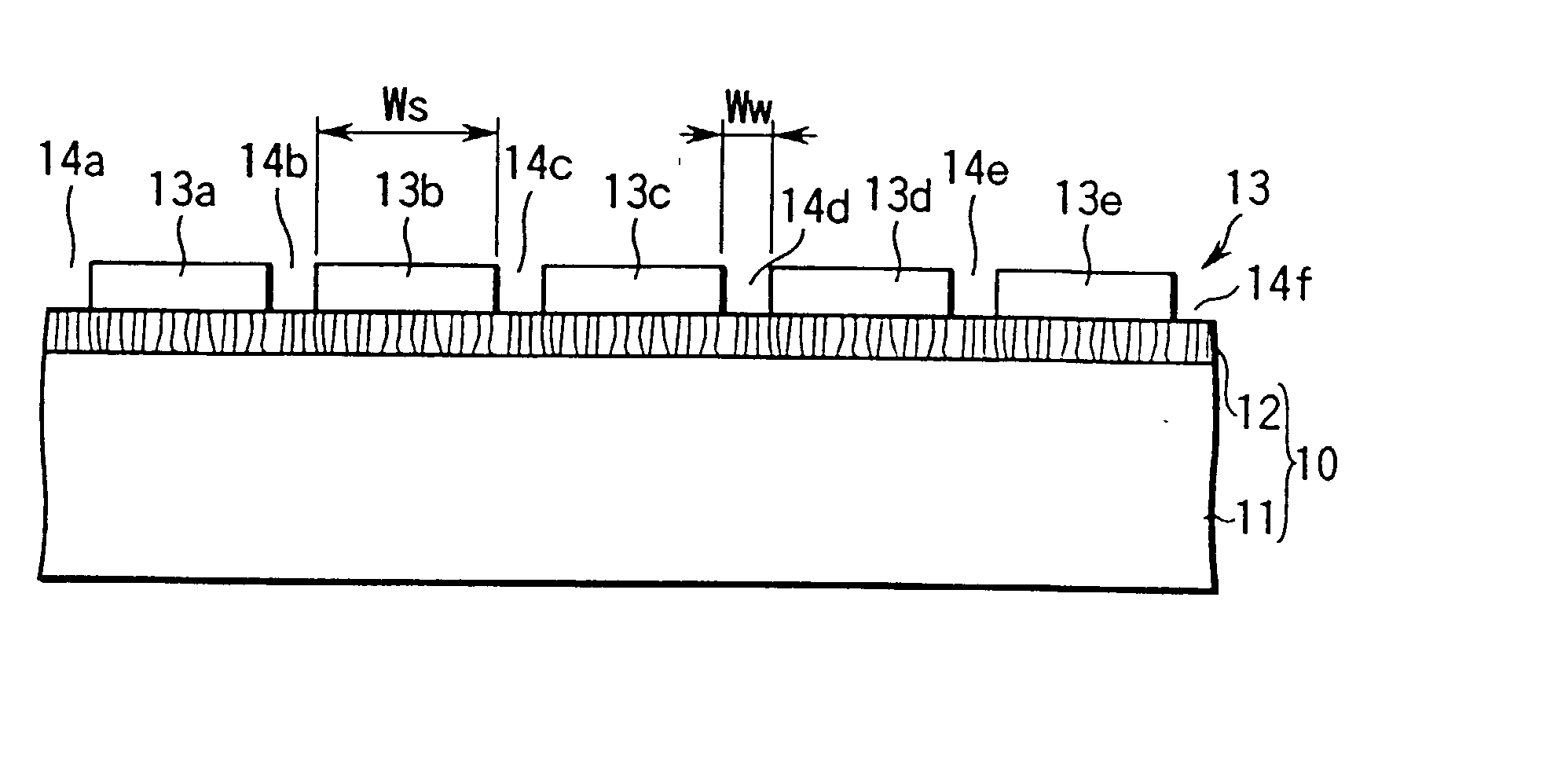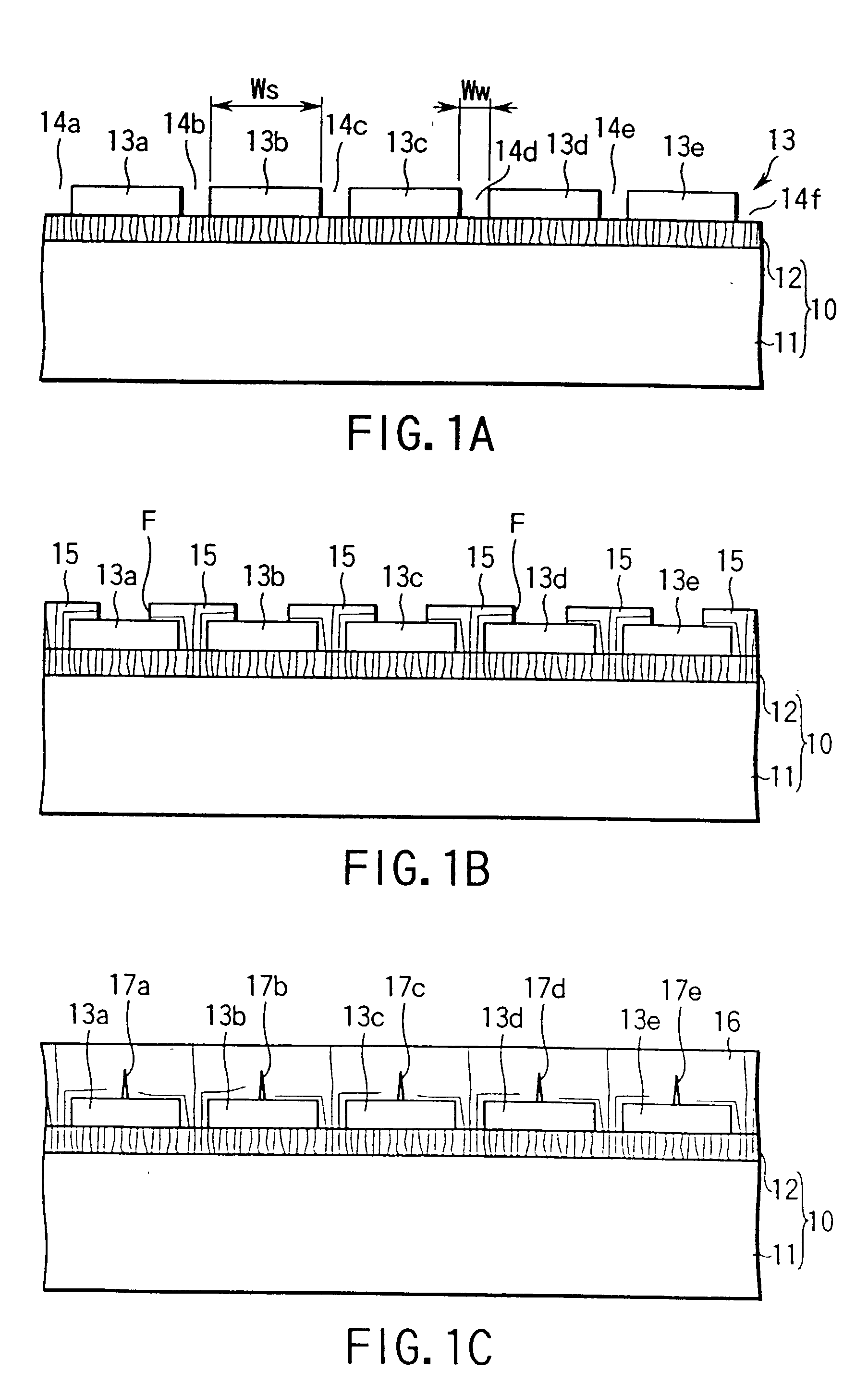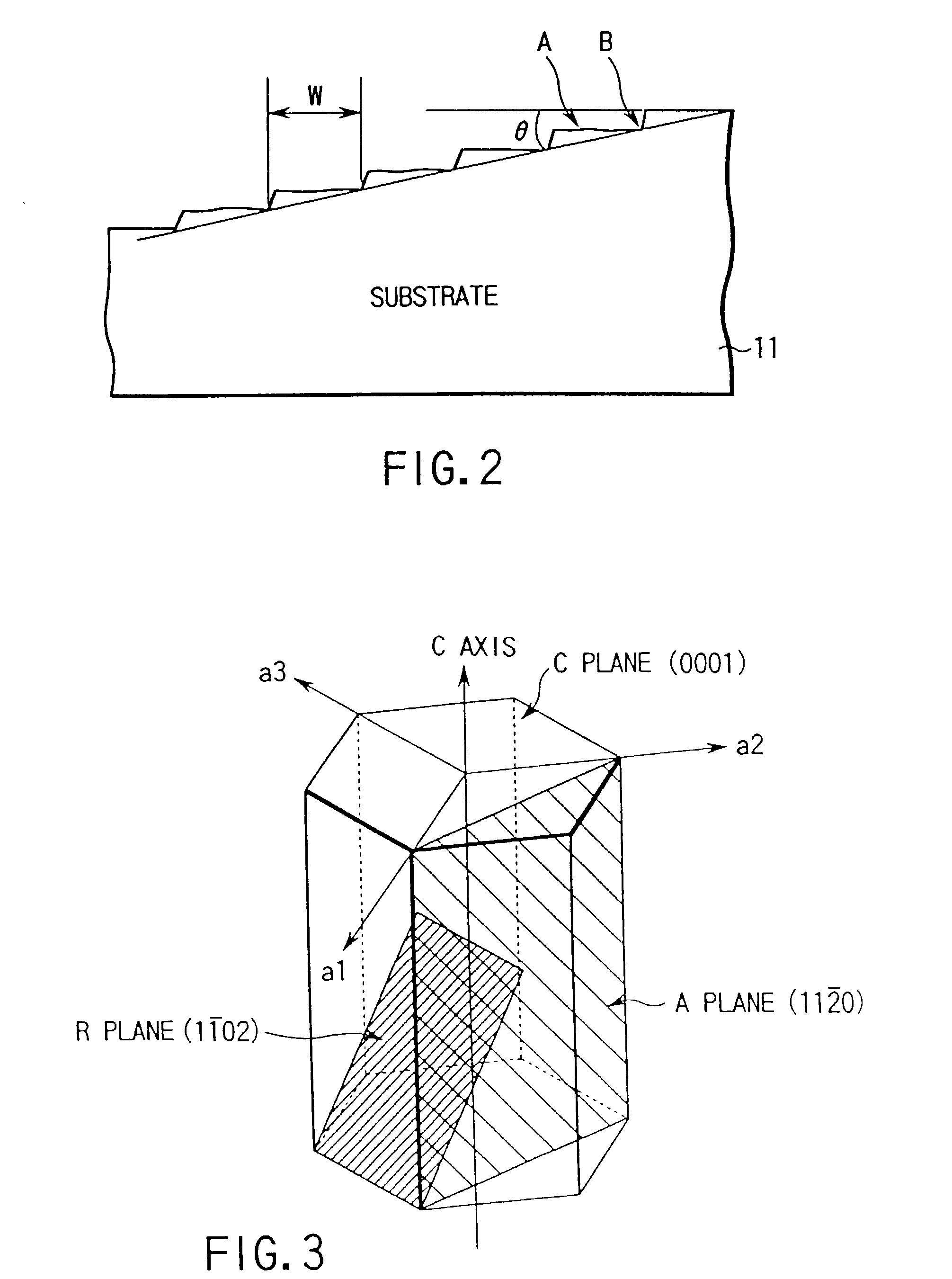Nitride semiconductor growth method, nitride semiconductor substrate, and nitride semiconductor device
a technology of nitride semiconductor and growth method, which is applied in the direction of crystal growth process, semiconductor/solid-state device details, semiconductor lasers, etc., can solve the problems of not having a practical gan bulk crystal like the one from which many wafers are cut to be used as substrates for the growth of nitride semiconductor layers, not having good crystallinity, and not having a lattice-matched substrate with nitride semiconductor
- Summary
- Abstract
- Description
- Claims
- Application Information
AI Technical Summary
Benefits of technology
Problems solved by technology
Method used
Image
Examples
example 1
[0138] This example will be described with reference to FIGS. 1A to 1C.
[0139] First of all, a striped photomask was formed on a sapphire substrate 11, 2 inches in diameter, having a C plane as a major surface and an ORF surface forming an A plane, and 0.1-.mu.m thick selective growth masks 13 made of many SiO.sub.2 stripes having a stripe width of 10 .mu.m and a stripe interval (width of each window) of 6 .mu.m were formed by using a CVD apparatus. The respective stripe masks were formed to extend parallel in a direction perpendicular to the ORF surface.
[0140] The sapphire substrate 11, on which the selective growth masks 13 were formed, was set in an MOVPE reaction vessel. A low-temperature buffer layer (not shown) made of GaN was then grown on the substrate 11, on which the selective growth masks 11 were formed, to a thickness of about 200 angstroms at a temperature of 510.degree. C. by using hydrogen as a carrier gas and ammonia and TMG as source gases. This low-temperature buffe...
example 2
[0145] This example will be described with reference to FIGS. 6A to 6C.
[0146] Second selective growth masks 113 having a stripe width of 10 .mu.m and a stripe interval of 6 .mu.m were grown on the surface of a GaN crystal 16 obtained as in Example 1 to a thickness of 0.1 .mu.m in the same manner as in Example 1. The positions of the second selective growth masks 113 were shifted from those of first selective growth masks 13. More specifically, mask alignment was performed such that the respective stripes of the second selective growth masks 113 were located at positions corresponding to windows 14 of the first selective growth masks and extend parallel to the first selective growth masks 13.
[0147] The wafer, on which the second selective growth masks 113 were formed, was placed back into the MOVPE reaction vessel, and a GaN crystal 116 doped with Si at 1.times.10.sup.18 / cm.sup.3 was grown to a thickness of 150 .mu.m by using TMG and ammonia as source gases and silane gas as a dopant...
example 3
[0149] This example will be described with reference to FIGS. 1A to 1C and 6A to 6C.
[0150] A low-temperature buffer layer made of GaN was grown on a sapphire substrate 11 as in Example 1 to a thickness of 200 angstroms, and an undoped GaN layer was grown on the buffer layer to a thickness of 5 .mu.m, thereby forming an underlayer 12 having a two-layer structure. First selective growth masks 13 made up of many SiO.sub.2 stripes having a stripe width of 10 .mu.m and a stripe interval of 8 .mu.m were grown on the flat surface of the underlayer 12 of a support member 10, obtained in this manner, to a thickness of 0.1 .mu.m by the same method as in Example 1. The first selective growth masks 13 extended parallel in a direction perpendicular to the sapphire A plane.
[0151] The wafer, on-which the first selective growth masks 13 were formed, was moved into the MOVPE reaction vessel. An undoped GaN crystal 16 was then grown on the wafer to a thickness of 10 .mu.m at 1,050.degree. C. by using...
PUM
| Property | Measurement | Unit |
|---|---|---|
| temperature | aaaaa | aaaaa |
| temperature | aaaaa | aaaaa |
| diameter | aaaaa | aaaaa |
Abstract
Description
Claims
Application Information
 Login to View More
Login to View More - R&D
- Intellectual Property
- Life Sciences
- Materials
- Tech Scout
- Unparalleled Data Quality
- Higher Quality Content
- 60% Fewer Hallucinations
Browse by: Latest US Patents, China's latest patents, Technical Efficacy Thesaurus, Application Domain, Technology Topic, Popular Technical Reports.
© 2025 PatSnap. All rights reserved.Legal|Privacy policy|Modern Slavery Act Transparency Statement|Sitemap|About US| Contact US: help@patsnap.com



